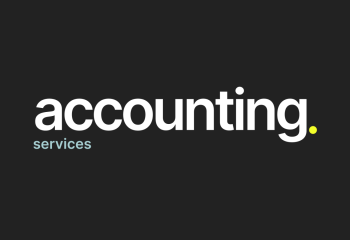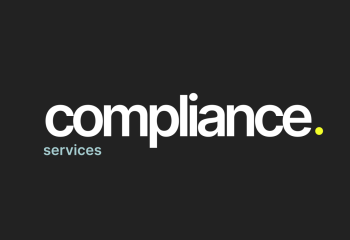Legal Update: 2025 Draft of Vietnam Bankruptcy Law – Part 1: Overview of New Changes
Views: 2551
The Supreme People's Court has just introduced the Draft Law on Bankruptcy (amendments) (hereinafter referred to as "Draft 2025") to amend the Bankruptcy Law 2014 No. 51/2014/QH13 (hereinafter referred to as "Bankruptcy Law 2014"), to solicit comments from affected entities. The document is expected to affect all businesses. The plan is to submit the Draft Bankruptcy Law 2025 to the National Assembly for discussion in May 2025, with an expected passage in the October 2025 session.9
.png)
Introductory
This legal document Draft 2025 outlines the procedures for corporate rehabilitation and bankruptcy in Vietnam. It details the roles and responsibilities of various parties, including judges, administrators, creditors, and debtors. The document also lays out the steps involved in initiating and managing both rehabilitation and bankruptcy proceedings, including timelines and appeals processes. Specific attention is given to the handling of assets and liabilities, the order of priority for debt repayment, and the conditions under which proceedings might be halted or dismissed. Finally, it addresses the qualification requirements for insolvency professionals and establishes strict guidelines to ensure impartiality and transparency.
ALTAS has studied the Draft 2025 (current version 1.0) to understand legal implications which will be presented below.
Briefing of 2025 Draft Bankruptcy Law Revisions
Below analysis provides a review of key changes and concepts related to bankruptcy procedures in Vietnam introduced by the Draft 2025, which will focus on the following areas:
· Key participants in bankruptcy cases.
· Roles and responsibilities of involved parties (e.g., administrators, creditors, courts)
· Procedures for recovery and bankruptcy.
· Asset management and liquidation.
· International recognition of bankruptcy rulings.
· Special provisions for financial institutions.
1. Key Participants in Bankruptcy Cases
Both the Draft 2025 and existing 2014 Bankruptcy Law identify several key participants involved in bankruptcy proceedings. These include:
(i) Creditors: Those owed money by the insolvent entity. The Draft specifies creditor is a key participant.
(ii) Employees: As stated, laborers or employees have specific rights and participation, particularly concerning unpaid wages and benefits.
(iii) Insolvent Enterprises/Cooperatives: is an enterprise or cooperative that does not fulfill its debt payment obligation within 06 months from the payment due date, except in the case of force majeure events or objective obstacles.
(iv) Enterprises/Cooperatives at Risk of Insolvency: an enterprise or cooperative pays a debt due within the next 6 months or a debt that is due but not more than 6 months from the date of filing a request to open recovery procedures, it will seriously affect the business operations of the enterprise or cooperative.
(v) Shareholders and Members: Including “shareholders and groups of shareholders of joint-stock companies; members and groups of members of limited liability companies”, and “members of cooperatives”, all of whom have rights and obligations.
(vi) Debtors: Individuals or entities owing money to the insolvent enterprise.
(vii) Other Related Parties: The Draft broadly encompasses other people with related rights, and obligations in the process.
2. Roles and Responsibilities of Involved Parties
The Draft 2025 clarifies and expands the roles and responsibilities of several key parties:
(i) Asset Management and Liquidation Administrator (Quản tài viên): These individuals or firms are appointed to oversee asset management, debt classification, and liquidation. The Draft 2025 explicitly mentions that the administrator must:
o Verify, collect and manage documents and evidence related to the operations of the enterprise, cooperative.
o Create an inventory of assets, list of creditors, list of debtors), and update these lists.
o Organize the valuation and liquidation of assets in accordance with this Law.
o Monitor the business activities of the enterprise/cooperative, sell assets to cover costs, and deposit funds into court-managed accounts.
(ii) Civil Judgment Enforcement Agency: They are empowered to enforce court decisions related to temporary measures, invalidating transactions, and bankruptcy declarations. These agencies have the right to request asset management and liquidation administrators to organize the valuation and liquidation of assets, and supervise the activities of administrators. They also directly handle asset liquidation in certain circumstances.
(iii) The Court: The court plays a central role in all phases of bankruptcy, responsible for accepting applications, issuing decisions, supervising administrators, and overseeing the proceedings. The court can also assist in gathering documents and evidence when necessary.
(iv) The People's Procuracy: They have an important role of oversight in legal proceedings including bankruptcy.
(v) Insolvent Businesses/Cooperative: The law clarifies their rights and responsibilities, including the right to provide opinions, propose recovery plans, and provide relevant information. They are also obligated to announce decisions regarding recovery or bankruptcy procedures, and temporarily cease debt payments.
(vi) Those who having related Rights and Obligations: Those are required to provide documents and evidence related to recovery or bankruptcy proceedings, and to comply with the requests of the judge, administrator, liquidation firm, and enforcement agencies.
3. Procedures for Recovery and Bankruptcy
The Draft 2025 outlines a dual system involving both recovery ("phục hồi") and bankruptcy ("phá sản") procedures, both of which are described in detail in the proposed revisions.
(i) Recovery Procedure:
o Initiated for enterprises/cooperatives at risk of insolvency, this procedure aims to restore the business to profitability.
o A key aspect of the recovery process is the development of a "business recovery plan” (phương án phục hồi hoạt động kinh doanh), which the insolvent entity can propose.
o The Draft 2025 introduces a “streamlined recovery process” (thủ tục rút gọn), and outlines the conditions and process for it.
o A "creditor meeting” is held to approve the recovery plan. The plan is considered approved if voted in favor by “creditors representing 65% or more of the total debt”. While the 2014 Bankruptcy Law calls for “more than half of the unsecured creditors present and representing 65% of the total unsecured debt or more voting in favor”. This is a significant change introduced by the Draft Law 2025.
o If the recovery plan is successful, the enterprise is deemed no longer insolvent and administrative processes terminate. If unsuccessful, they are subject to bankruptcy proceedings.
o The Draft Law mentions that a company is required to temporarily stop debt payments, stop contributing to the pension and death fund, and temporarily delay the exit of the legal representative of the company, cooperative upon a decision to initiate recovery proceedings.
(ii) Bankruptcy Procedure:
o Initiated for enterprises/cooperatives that are insolvent. The Draft Law allows for various stakeholders to initiate bankruptcy proceedings including employees, creditors, and shareholders.
o The Draft 2025 mentions the need to publicly announce the decision to initiate recovery proceedings or cancel the decision to initiate recovery proceedings immediately after receiving it.
o Similar to the recovery process, a creditor meeting is also a part of the bankruptcy proceedings, with the goal to make decisions regarding the business (either for recovery, or for liquidation) and/or approve agreements made between the parties.
o A key step in bankruptcy is the liquidation of assets and the distribution of proceeds to creditors. This also requires an administrator. If the business is deemed unable to fulfill its debts, it will be declared bankrupt.
o Once a bankruptcy decision is made, the business ceases operation and its assets are liquidated and allocated according to the law.
4. Asset Management and Liquidation
The Draft 2025 detail processes for managing and liquidating assets:
· Asset Inventory: The revised law states that Administrators are required to create an inventory of assets, a list of creditors, and a list of debtors.
· Asset Valuation: Administrators are responsible for organizing the valuation of assets and this process must be done within a strict timeframe.
· Asset Sale: Assets are sold through auction, or for smaller value assets can be sold without auction procedures. The Draft 2025 mandates that the auction of movable property must be done within 30 days, and for real estate within 45 days after signing the asset auction contract, with the exception of cases where the assets to be auctioned are overseas.
· Protection of Assets: The Draft 2025 aims to prevent asset dissipation. Businesses are forbidden from "hiding, dissipating, giving away assets” (cất giấu, tẩu tán, tặng cho tài sản) after the initiation of recovery or bankruptcy proceedings. The court can also take measures to invalidate transactions made to hide assets.
5. International Recognition of Bankruptcy Rulings
The Draft 2025 includes a section on the recognition and enforcement of foreign bankruptcy rulings in Vietnam, stating that a “foreign bankruptcy representative in Vietnam” (Đại diện phá sản nước ngoài ở Việt Nam), or “a person with the authority to enforce it under the law of the country issuing the bankruptcy
ruling” (người có thẩm quyền thi hành theo luật của nước ban hành bản án, quyết định về phá sản), has the right to request a Vietnamese court to recognize and enforce the foreign bankruptcy ruling.
6. Special Provisions for Financial Institutions
The Draft 2025 also include specific provisions for the bankruptcy of financial institutions:
· The revised law specifically mentions that organizations that were subject to special control or were not subject to recovery measures) by the State Bank of Vietnam are subject to bankruptcy proceedings.
· The order for asset distribution for these institutions is prioritized, with special treatment given to repaying loans made by the State Bank of Vietnam or other credit institutions for recapitalization before the repayment of creditors.
· The revised law also prioritizes returning savings deposits after deducting amounts that have already been paid out by the deposit insurance organization.
The Draft 2025 increases details in the responsibilities of administrators and enforcement agencies, also emphasis on protecting the rights of employees and small-value creditors: The priority for employee rights and ensuring they receive owed wages and benefits is emphasized.
ALTAS provides Legal Services related to Bankruptcy and Corporate Restructuring
(i) Legal advice related to bankruptcy procedures such as: payment procedures, consequences, measures to handle assets, etc.;
(ii) Checking and evaluating the legality of contracts and due debts;
(iii) Representing clients in bankruptcy procedures, participating in negotiations with related parties;
(iv) Legal advice related to corporate restructuring.
Conclusion
The Draft 2025 detail a comprehensive set of legal revisions intended to make Vietnam’s bankruptcy procedures more transparent, efficient, and fair. The changes aim to balance the rights of creditors, employees, and the insolvent business itself. The focus on efficient asset recovery and the addition of international recognition for bankruptcy rulings demonstrate a move toward international best practices.
ALTAS LAW is committed to supporting investors and businesses during this volatile period. Please contact Partner Chris Luong at chris.luong@altas.vn if you need further information or assistance.
Copyright © 2025 ALTAS LAW. All rights reserved. Ownership: This documentation and content (Content) is a proprietary resource owned exclusively by ALTAS LAW (meaning ALTAS LAW, ALTAS CORP and its member firms). Use of this Content does not of itself create a contractual relationship, nor any attorney/client relationship, between ALTAS LAW and any person. Disclaimers: The Content provided is for informational purposes only and may not reflect the latest legal or regulatory developments. Summaries of laws, regulations, and practices are subject to change. This Content does not constitute legal or professional advice for any specific situation and should not be relied upon as a substitute for reviewing and complying with applicable laws, rules, regulations, or official forms. Always seek legal counsel before making any decisions or taking any action based on this Content. ALTAS LAW, along with its editors and contributing authors, make no guarantees regarding the accuracy of the Content and explicitly disclaim any liability for any consequences resulting from actions taken, allowed, or omitted, whether fully or partially based on any part of the Content. The Content may include links to external websites, and external sites may also link to it. ALTAS LAW is not responsible for the content or functionality of any such external websites and disclaims all liability for any issues arising from their content or operation. Please note: Past results do not guarantee similar outcomes.
Written: Luong Van Chuong - Partner Lawyer at ALTAS Law & Nguyen Tran Ngoc Thach - Legal Senior Assistant
Date: 17/02/2025
.png)

























![?️ [ALTAS TALK IS COMEBACK | SERIES: “TAX MATTERS 2025”] ?️ [ALTAS TALK IS COMEBACK | SERIES: “TAX MATTERS 2025”]](thumbs/210x144x1/upload/news/altas-talkintro-7705.png)



